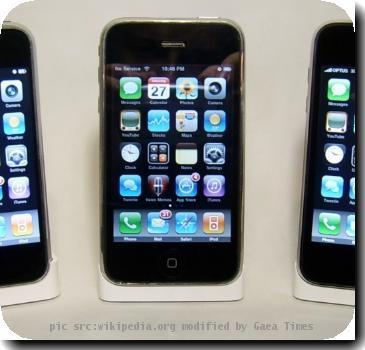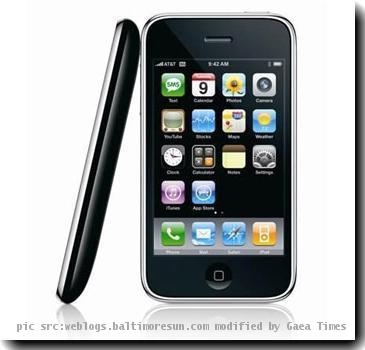AT&T adds fewer wireless customers under contract, even as iPhone maintains allure
By Peter Svensson, APWednesday, April 21, 2010
Bad sign for AT&T: fewer new contract customers
NEW YORK — AT&T Inc. added fewer wireless customers with contracts in the first quarter than it has since 2004, an indication that the saturation of the market is even starting to catch up with the carrier of the iPhone.
The country’s largest telecommunications provider said Wednesday that it added a net 512,000 wireless customers under contracts, down 43 percent from a year ago.
Over the past week, analyst reports indicated that AT&T was expected to add between 500,000 and 600,000 contract-signing customers.
AT&T activated about 900,000 iPhones for new customers. However, it lost some iPhone subscribers to other carriers as well, so it’s not clear how much the iPhone contributed to the net gain of 512,000. Another 1.8 million people who were already AT&T customers also got iPhones.
Customers under contract pay a lot more than those who “prepay” for service, or buy service through a wholesaler like Tracfone.
AT&T is the first major wireless company to report for the first quarter and the exclusive U.S. carrier for the iPhone. Chief Financial Officer Rick Lindner said the low number of new contracts was a reflection of the fact that nearly everyone now has a cell phone, and not because AT&T was losing customers to other carriers.
“I think what you’ll find is that … versus the rest of the market in total, we’ll have gained some share,” he said in an interview.
Analyst Craig Moffett at Sanford Bernstein said the low figure for new contracts at AT&T, which has a lot of help from the iPhone, made it “hard to be optimistic about anyone else’s results without it.”
AT&T is the exclusive U.S. carrier for the iPhone, but Verizon Wireless is expected to get to sell a version of the device at some point.
The low number of new contract customers actually helped AT&T’s results in the short term, because it didn’t have to sell as many subsidized phones. And the subscribers it does have were more profitable because more signed up for data plans.
AT&T earned $2.48 billion, or 42 cents per share, in the first three months of the year. That was down 21 percent from a year ago. But excluding one-time items, AT&T earned 59 cents per share, beating the average forecast of 54 cents per share by analysts surveyed by Thomson Reuters. The items included a previously announced charge of $995 million, or 17 cents per share, to reflect a change in the health care reform package regarding the tax treatment of benefits.
Revenue was $30.6 billion, flat with a year ago and slightly below analyst expectations for $30.7 billion.
In afternoon trading, AT&T shares fell 37 cents, or 1.4 percent, at $26.29.
AT&T’s earnings also were helped by relative stability on the wireline side of the business. Like all phone companies, AT&T is losing landlines as people opt for cell phones or phone service from cable companies. But AT&T said it managed a 0.8 percent increase in consumer revenue from the prior quarter — the first such uptick in more than two years. It came from investments AT&T has made in its U-Verse service, which delivers TV and faster Internet service in an attempt to take on cable companies.
Lindner said he had “some confidence” that the company could increase earnings further this year.
Some of those profits will come from cost-cutting. The company cut 6,440 jobs during the quarter, about 2 percent of the work force, ending with 276,280 employees. Lindner said he expected the work force to keep shrinking this year as the company consolidates functions, but not as fast as in the first quarter.
In total, AT&T added 1.9 million wireless subscribers, a figure comparable to the best quarters in recent years. But 1.1 million of those were not using phones. Instead they were on e-readers such as Amazon.com Inc.’s Kindle and GPS units that download traffic updates and maps wirelessly.
The number of gadgets that aren’t phones but use the wireless network is expected to grow explosively in the next few years, and AT&T is taking a lead in recruiting manufacturers to its network. However, each device doesn’t yield much revenue: perhaps $3 to $4 per month, compared to $62 per month for the average phone subscriber under contract.
AT&T ended the quarter with 87 million wireless subscribers. It has been trailing Verizon Wireless, which had 91.2 million at the end of last year and is set to report first-quarter figures Thursday.
Versions of Apple’s iPad tablet computer that are compatible with AT&T’s network are due out April 30. AT&T is providing a special deal for iPad owners: $30 per month for unlimited data service, with no contract. That’s half of what data service costs for a laptop, but AT&T is also predicting that data use from the iPad will be less than what laptops use, and Lindner expects the service to carry an attractive profit margin.
Tags: Amazon, New York, North America, United States


